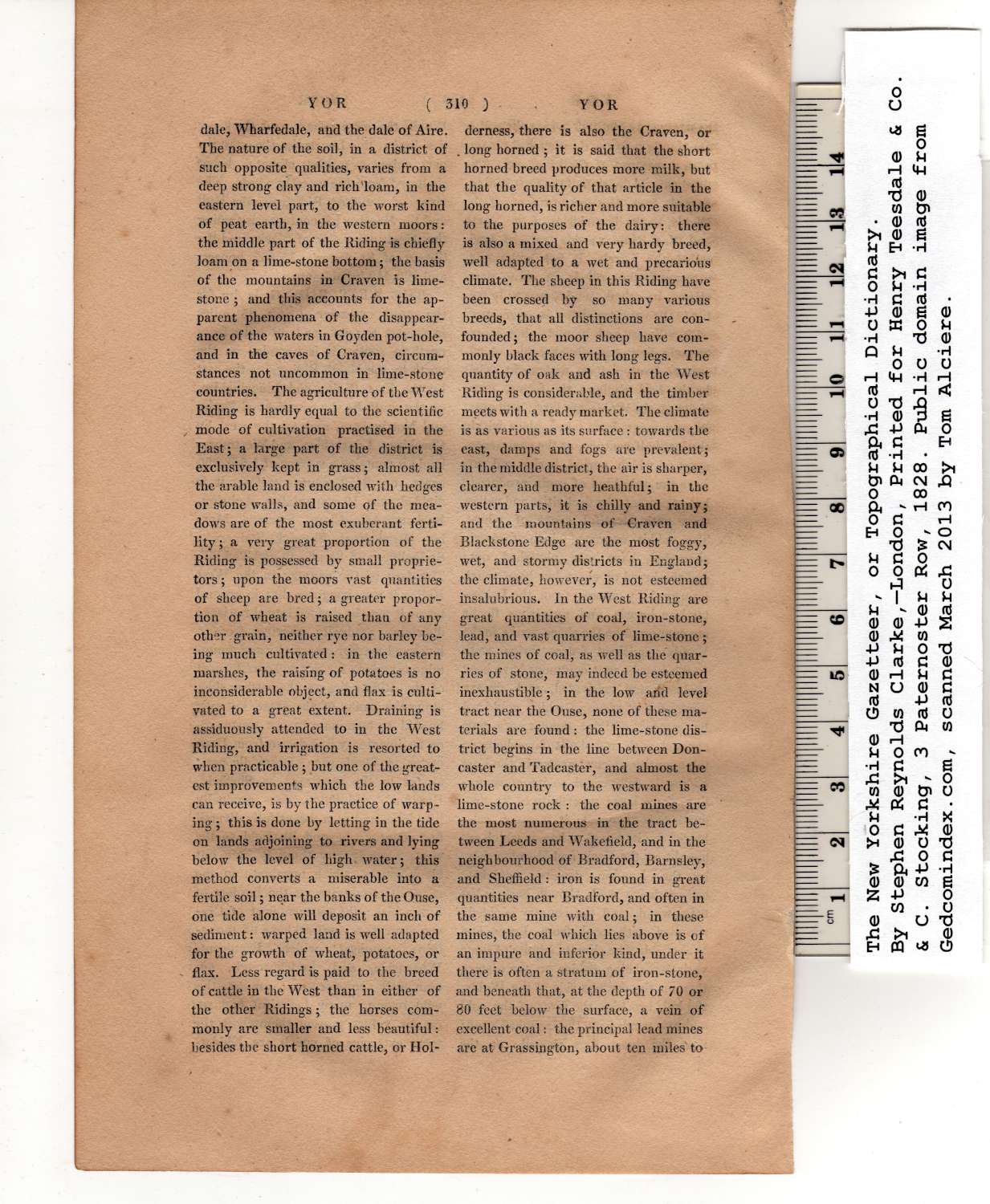|
dale, Wharfedale, and the dale of Aire.
The nature of the soil, in a district of
such opposite qualities, varies from a
deep strong clay and rich loam, in the
eastern level part, to the worst kind
of peat earth, in the western moors:
the middle part of the Riding is chiefly
loam on a lime-stone bottom; the basis
of the mountains in Craven is lime-
stone ; and this accounts for the ap-
parent phenomena of the disappear-
ance of the waters in Goyden pot-hole,
and in the caves of Craven, circum-
stances not uncommon in lime-stone
countries. The agriculture of the West
Riding is hardly equal to the scientific
mode of cultivation practised in the
East; a large part of the district is
exclusively kept in grass; almost all
the arable land is enclosed with hedges
or stone walls, and some of the mea-
dows are of the most exuberant ferti-
lity; a very great proportion of the
Riding is possessed by small proprie-
tors; upon the moors vast quantities
of sheep are bred; a greater propor-
tion of wheat is raised than of any
other grain, neither rye nor barley be-
ing much cultivated : in the eastern
marshes, the raising of potatoes is no
inconsiderable object, and flax is culti-
vated to a great extent. Draining is
assiduously attended to in the West
Riding, and irrigation js resorted to
when practicable; but one of the great-
est improvements which the low lands
can receive, is by the practice of warp-
ing ; this is done by letting in the tide
on lands adjoining to rivers and lying
below the level of high water; this
method converts a miserable into a
fertile soil; near the banks of the Ouse,
one tide alone will deposit an inch of
sediment: warped land is well adapted
for the growth of wheat, potatoes, or
flax. Less regard is paid to the breed
of cattle in the West than in either of
the other Ridings; the horses com-
monly are smaller and less beautiful:
besides tbe short horned cattle, or Hol-
derness, there is also the Craven, or
. long horned ; it is said that the short
horned breed produces more milk, but
that the quality of that article in the
long horned, is richer and more suitable
to the purposes of the dairy: there
is also a mixed and very hardy breed,
well adapted to a wet and precarious
climate. The sheep in this Riding have
been crossed by so many various
breeds, that all distinctions are con-
founded; the moor sheep have com-
monly black faces with long legs. The
quantity of oak and ash in the West
Riding is considerable, and the timber
meets with a ready market. The climate
is as various as its surface: towards the
east, damps and fogs are prevalent;
in the middle district, the air is sharper,
clearer, and more heathful; in the
western parts, it is chilly and rainy;
and the mountains of Craven and
Blackstone Edge are the most foggy,
wet, and stormy districts in England;
the climate, however, is not esteemed
insalubrious. In the West Riding are
great quantities of coal, iron-stone,
lead, and vast quarries of lime-stone;
the mines of coal, as well as the quar-
ries of stone, may indeed be esteemed
inexhaustible; in the low and level
tract near the Ouse, none of these ma-
terials are found : the lime-stone dis-
trict begins in the line between Don-
caster and Tadcaster, and almost the
whole country to the westward is a
lime-stone rock : the coal mines are
the most numerous in the tract be-
tween Leeds and Wakefield, and in the
neighbourhood of Bradford, Barnsley,
and Sheffield: iron is found in great
quantities near Bradford, and often in
the same mine with coal; in these
mines, the coal which lies above is of
an impure and inferior kind, under it
there is often a stratum of iron-stone,
and beneath that, at the depth of 70 or
80 feet below the surface, a vein of
excellent coal: the principal lead mines
are at Grassington, about ten miles to |
|
